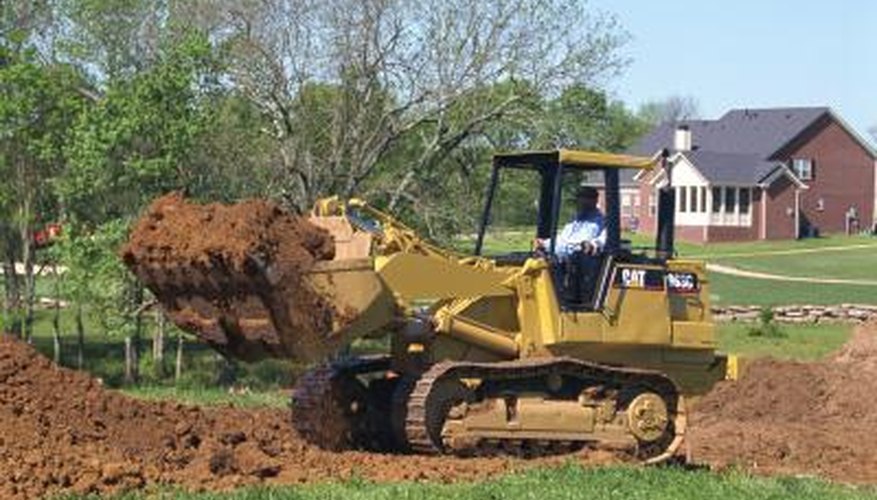The power of mechanical motion performs many tasks that used to come from brute human or animal labour. Transportation, construction and manufacturing have all become more efficient with the help of machines. For all the benefits, however, machines present problems, both technical and social. Transmitting mechanical power over long distances is inefficient. Maintaining machines is complicated and takes time, money and labour.
Direct Use
Mechanical power makes a direct, immediate impact where you use it. At a construction site, cranes lift heavy loads, saws cut material and bulldozers excavate land. The machines get their energy from electricity or the chemical energy in fuel. The electricity and fuel do no useful work by themselves until the machines convert their energies into mechanical power.
- Mechanical power makes a direct, immediate impact where you use it.
- The machines get their energy from electricity or the chemical energy in fuel.
Long Distance Transmission
Sending mechanical power over long distances is inefficient. Friction in ropes, gears and other mechanisms turn much of the useful mechanical energy into heat before it reaches its destination. Transmitting mechanical power in this manner is also bulky and unwieldy. Here, electrical and chemical power have an advantage. Pipes and power lines carry fuel and electricity many miles with good efficiency.
- Sending mechanical power over long distances is inefficient.
- Here, electrical and chemical power have an advantage.
Power
Machines develop much higher levels of power than manual labour, both in absolute terms and by size. A battery-powered drill will let you place several times the screws than you could install by hand. Forklifts, elevators and cranes lift tons of materials rapidly and without strain. Vehicles powered by engines and motors move heavy loads at speeds far higher than draft animals could manage.
- Machines develop much higher levels of power than manual labour, both in absolute terms and by size.
- Vehicles powered by engines and motors move heavy loads at speeds far higher than draft animals could manage.
Safety
Mechanical power has both safety benefits and downsides. Replacing manual labour with machines eliminates many causes of injuries from exertion and accidents. Machines have also caused many injuries. The power of machines, their heaviness and unyielding mechanisms create hazardous situations. Over time, the designs of machines and the training to use them has reduced injuries, though hazards remain.
- Mechanical power has both safety benefits and downsides.
- The power of machines, their heaviness and unyielding mechanisms create hazardous situations.
Maintenance
All machines wear out over time and require replacement parts, lubrication and adjustments. If a machine receives poor maintenance, it eventually stops working. Before it stops working, it may become a safety problem. It costs money to produce and stock spare parts and train people to repair machines. Mechanical power cannot deliver its benefits without the proper maintenance of machines.
- All machines wear out over time and require replacement parts, lubrication and adjustments.
- Mechanical power cannot deliver its benefits without the proper maintenance of machines.
